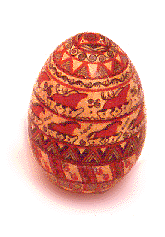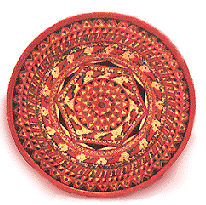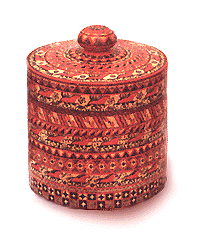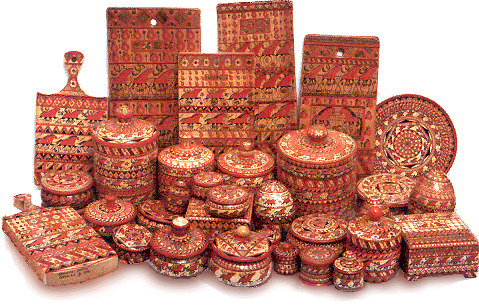







T
he paintings was of great importance in design of Russian North izbas
(peasant households) fronts and interiors. The folk artists ornamented
by paintings a majority of everyday articles. These articles accompanied
a man from birth up to a great age, and carried in his life the joy and
beauty. Unfortunately, time is destroyed a great deal of these decorative
paintings and only individual fragments reach us. Among them there is no
totally identical ones, although the paintings might be like by style,
manner of performance, and colour.

M ezen paintings, as well as a many of other folk handicrafts, received its name according to locality, where it was conceived. The Mezen river is between the North Dvina and Pechora rivers, on the taiga and tundra line.
M
ezen paintings by its nature is the most
ancient one among the russian artistic handicraft industries. Its sources
are lost in the remote ages, in the initial period of the Slavic tribes
forming. Peak of the handicraft popularity dates from the XIX century. At
this time Mezen distaffs and baskets of bast were widely practised in the
vicinity of Pinega river, and exported to the Pechora, Dvina, and Onega
regions.

T hemes of the Mezen paintings, laconic and expressive stylized drawing bring it together the ancient rock drawings of the Russian North. The restrained colour, where the black outline emphasizes the strained sounding of the brownish-red colour, resembles unwittingly paleolithic cave paintings of France... Brightness and multi colourness traditional for the Russian folk art are unusual to the Mezen paintings. Ornaments have stingy and relative graphic form.
A rtist creates a design in conformity with his inherent mood, and his consideration for future owner of handicrafts; nevertheless the design is submits to the strict rules of ornament construction and to the symbols meaning.

T
he Mezen paintings was realized by a carbon-black and clay, dissolved in the
infusion of the larch resin. The use of stick and heath-cock feather indicate
a very anchient traditions. The board of a very precise proportion should
be used: its width must be three times lesser than the length. The structure
of oak became apparent after impregnation the board with a linseed-oil.
Tracery of the grains determines, to a large extent, the feature of ornament
consisting of the symbols, just as the words are formed from the letters.
The inherent content of symbols, their origin and correlation are already,
for the most part, lost.

L ately one began to use a fashion method - painting on the gold background. This is unsuccessful attempt to please the mass buyer. Following this innovation, the refinement, strictness, and originality of style are disappear. Giving age-old traditions up will lead to the handicraft degeneration.
U nfortunately, only few people are engaged in the renewal of Mezen paintings. It may be seen only in Zagorsk museum or directly in Mezen...
O n this page the works of Vera Sedova - one of a few artists engaged in Mezen paintings - are showed. You may communicate with her by the following address: mezenskaya-rospis@yandex.ru.
Y ou may also read about Mezen paintings in:
